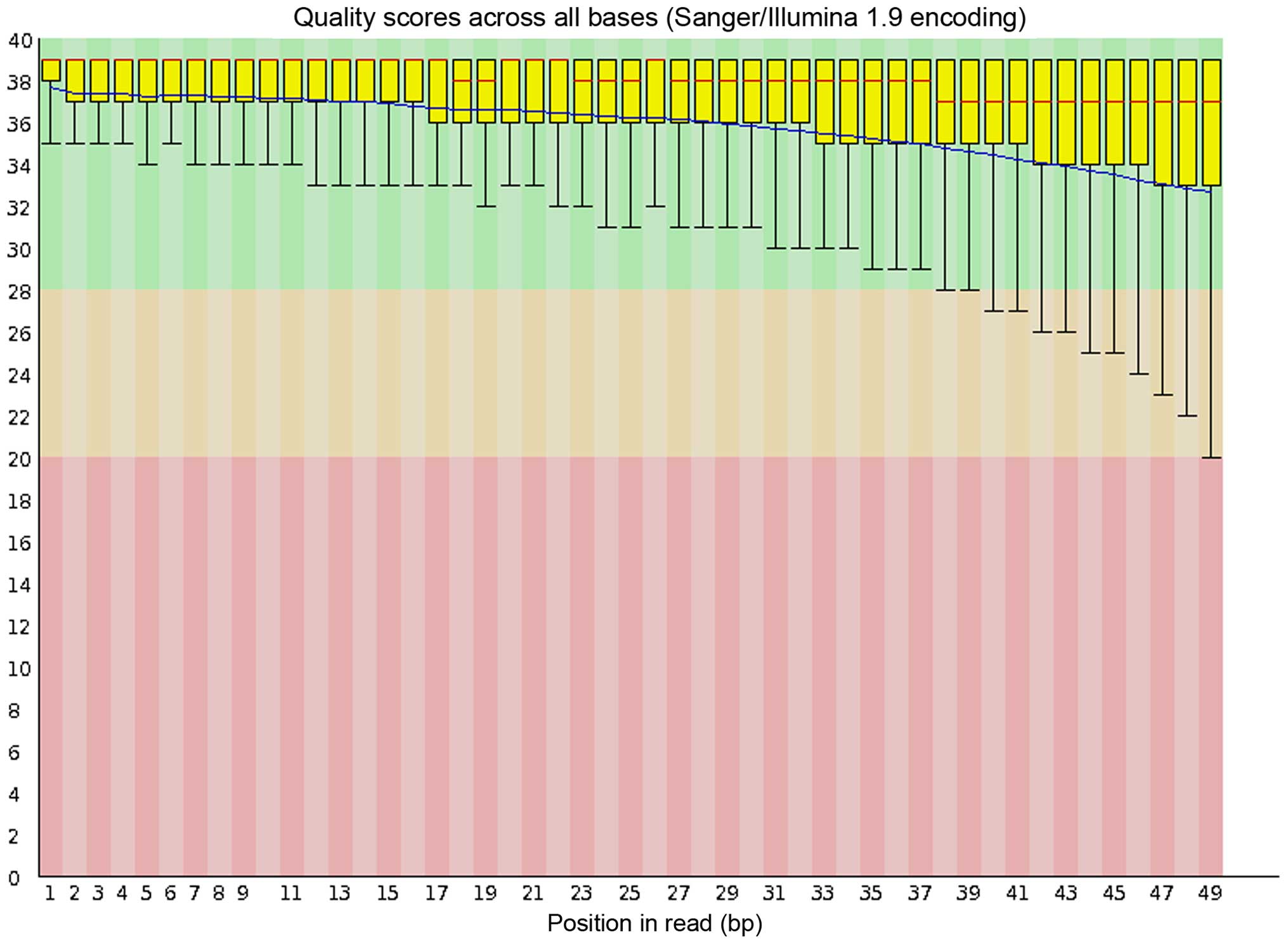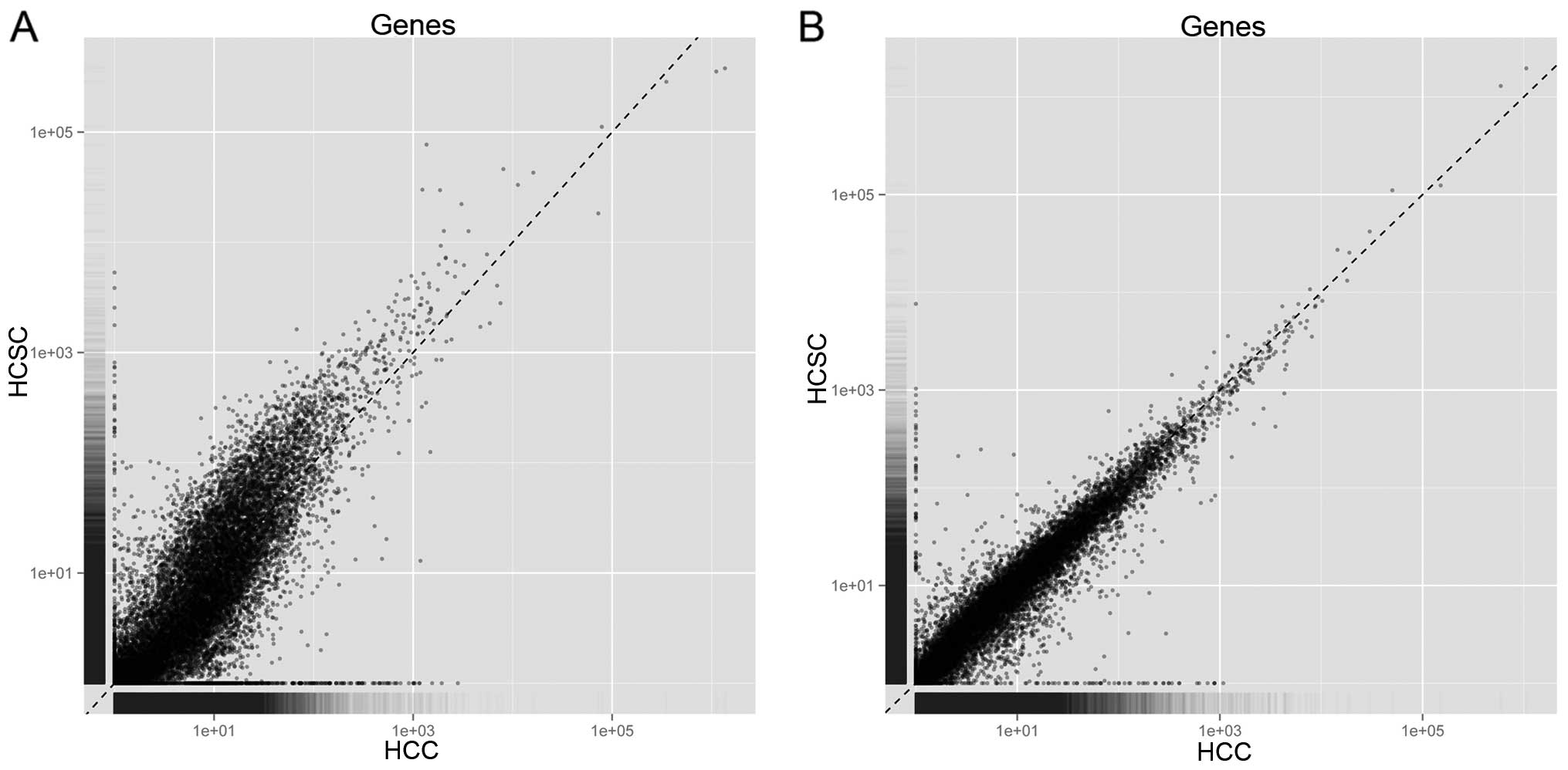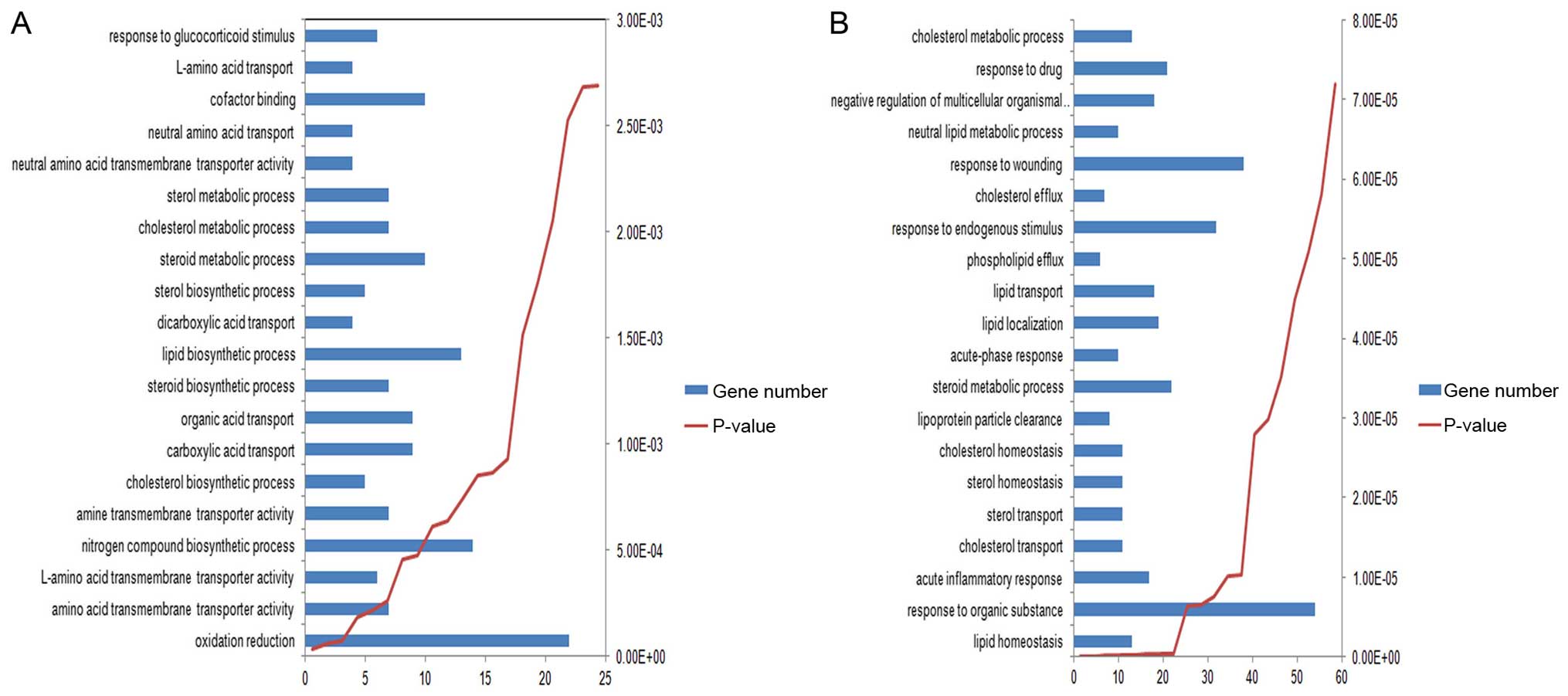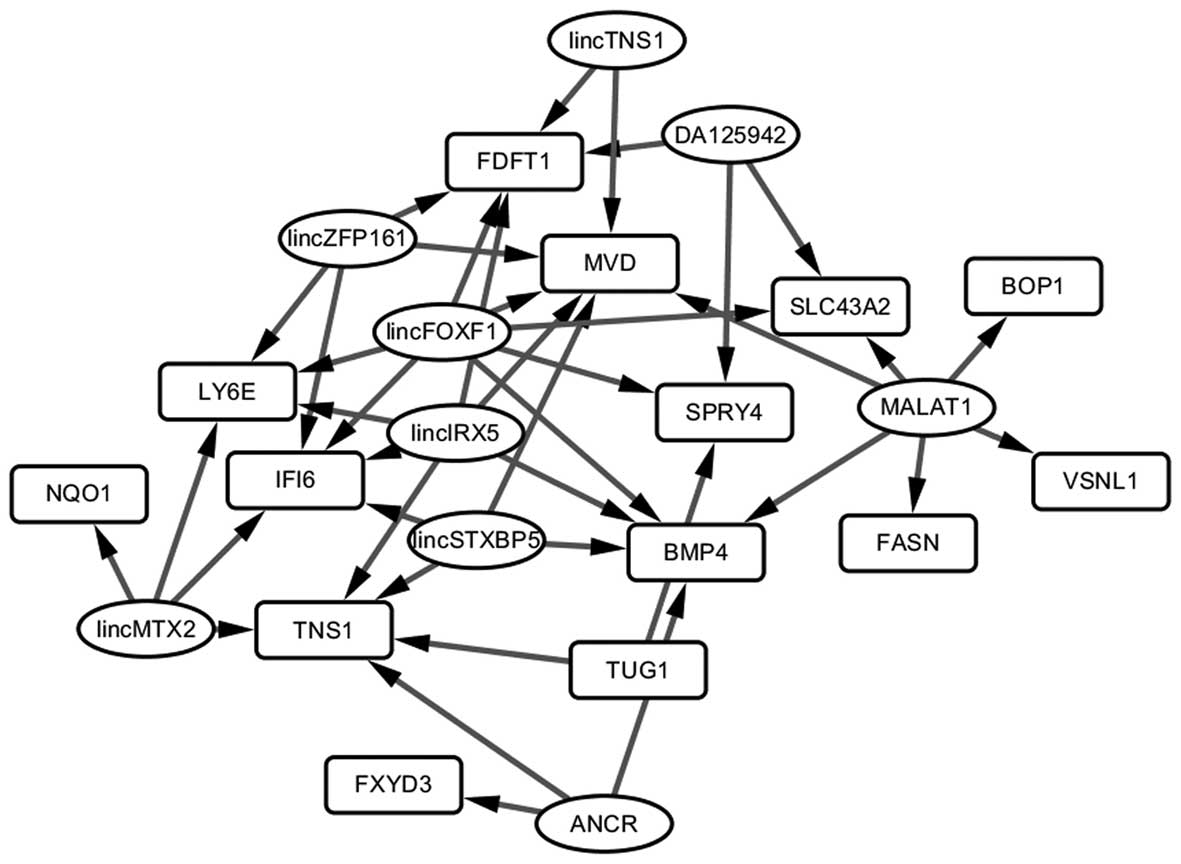|
1
|
Chen X, Liu HP, Li M and Qiao L: Advances
in non-surgical management of primary liver cancer. World J
Gastroenterol. 20:16630–16638. 2014. View Article : Google Scholar : PubMed/NCBI
|
|
2
|
Margini C and Dufour JF: The story of HCC
in NAFLD: From epidemiology, across pathogenesis, to prevention and
treatment. Liver Int. 36:317–324. 2016. View Article : Google Scholar
|
|
3
|
Chen JG and Zhang SW: Liver cancer
epidemic in China: Past, present and future. Semin Cancer Biol.
21:59–69. 2011. View Article : Google Scholar
|
|
4
|
D'Alessandro R, Messa C, Refolo MG and
Carr BI: Modulation of sensitivity and resistance to multikinase
inhibitors by microenvironmental platelet factors in HCC. Expert
Opin Pharmacother. 16:2773–2780. 2015. View Article : Google Scholar : PubMed/NCBI
|
|
5
|
Zou H, Feng X and Cao JG: Twist in
hepatocellular carcinoma: Pathophysiology and therapeutics. Hepatol
Int. 9:399–405. 2015. View Article : Google Scholar : PubMed/NCBI
|
|
6
|
Frau M, Biasi F, Feo F and Pascale RM:
Prognostic markers and putative therapeutic targets for
hepatocellular carcinoma. Mol Aspects Med. 31:179–193. 2010.
View Article : Google Scholar : PubMed/NCBI
|
|
7
|
Todoroki K, Ogasawara S, Akiba J, Nakayama
M, Naito Y, Seki N, Kusukawa J and Yano H:
CD44v3+/CD24− cells possess cancer stem
cell-like properties in human oral squamous cell carcinoma. Int J
Oncol. 48:99–109. 2016.
|
|
8
|
Ding M, Li J, Yu Y, Liu H, Yan Z, Wang J
and Qian Q: Integrated analysis of miRNA, gene, and pathway
regulatory networks in hepatic cancer stem cells. J Transl Med.
13:2592015. View Article : Google Scholar : PubMed/NCBI
|
|
9
|
Moitra K: Overcoming multidrug resistance
in cancer stem cells. BioMed Res Int. 2015:6357452015. View Article : Google Scholar : PubMed/NCBI
|
|
10
|
Khorrami S, Zavaran Hosseini A, Mowla SJ
and Malekzadeh R: Verification of ALDH activity as a biomarker in
colon cancer stem cells-derived HT-29 cell line. Iran J Cancer
Prev. 8:e34462015. View Article : Google Scholar : PubMed/NCBI
|
|
11
|
Sun J, Luo Q, Liu L, Zhang B, Shi Y, Ju Y
and Song G: Biomechanical profile of cancer stem-like cells derived
from MHCC97H cell lines. J Biomech. 49:45–52. 2016. View Article : Google Scholar
|
|
12
|
Matthai SM and Ramakrishna B: Cancer stem
cells in hepatocellular carcinoma - an immunohistochemical study
with histopathological association. Indian J Med Res. 142:391–398.
2015. View Article : Google Scholar : PubMed/NCBI
|
|
13
|
Jones MF, Hara T, Francis P, Li XL, Bilke
S, Zhu Y, Pineda M, Subramanian M, Bodmer WF and Lal A: The CDX1-
microRNA-215 axis regulates colorectal cancer stem cell
differentiation. Proc Natl Acad Sci USA. 112:E1550–E1558. 2015.
View Article : Google Scholar
|
|
14
|
Wang M, Ren D, Guo W, Huang S, Wang Z, Li
Q, Du H, Song L and Peng X: N-cadherin promotes
epithelial-mesenchymal transition and cancer stem cell-like traits
via ErbB signaling in prostate cancer cells. Int J Oncol.
48:595–606. 2016.
|
|
15
|
Gui X, Li H, Li T, Pu H and Lu D: Long
noncoding RNA CUDR regulates HULC and beta-catenin to govern human
liver stem cell malignant differentiation. Mol Ther. 23:1843–1853.
2015. View Article : Google Scholar : PubMed/NCBI
|
|
16
|
Li H, An J, Wu M, Zheng Q, Gui X, Li T, Pu
H and Lu D: LncRNA HOTAIR promotes human liver cancer stem cell
malignant growth through downregulation of SETD2. Oncotarget.
6:27847–27864. 2015. View Article : Google Scholar : PubMed/NCBI
|
|
17
|
Trapnell C, Roberts A, Goff L, Pertea G,
Kim D, Kelley DR, Pimentel H, Salzberg SL, Rinn JL and Pachter L:
Differential gene and transcript expression analysis of RNA-seq
experiments with TopHat and Cufflinks. Nat Protoc. 7:562–578. 2012.
View Article : Google Scholar : PubMed/NCBI
|
|
18
|
Huang W, Sherman BT and Lempicki RA:
Systematic and integrative analysis of large gene lists using DAVID
bioinformatics resources. Nat Protoc. 4:44–57. 2009. View Article : Google Scholar
|
|
19
|
Jiang Q, Wang J, Wu X, Ma R, Zhang T, Jin
S, Han Z, Tan R, Peng J, Liu G, et al: LncRNA2Target: A database
for differentially expressed genes after lncRNA knockdown or
overexpression. Nucleic Acids Res. 43:D193–D196. 2015. View Article : Google Scholar :
|
|
20
|
Shannon P, Markiel A, Ozier O, Baliga NS,
Wang JT, Ramage D, Amin N, Schwikowski B and Ideker T: Cytoscape: A
software environment for integrated models of biomolecular
interaction networks. Genome Res. 13:2498–2504. 2003. View Article : Google Scholar : PubMed/NCBI
|
|
21
|
Li J, Yu Y, Wang J, Yan Z, Liu H, Wang Y,
Ding M, Cui L, Wu M, Jiang X, et al: Establishment of a novel
system for the culture and expansion of hepatic stem-like cancer
cells. Cancer Lett. 360:177–186. 2015. View Article : Google Scholar : PubMed/NCBI
|
|
22
|
You N, Zheng L, Liu W, Zhong X, Wang W and
Li J: Proliferation inhibition and differentiation induction of
hepatic cancer stem cells by knockdown of BC047440: A potential
therapeutic target of stem cell treatment for hepatocellular
carcinoma. Oncol Rep. 31:1911–1920. 2014.PubMed/NCBI
|
|
23
|
Yao CJ, Yeh CT, Lee LM, Chuang SE, Yeh CF,
Chao WJ, Lai TY and Lai GM: Elimination of cancer stem-like ʻside
population' cells in hepatoma cell lines by chinese herbal mixture
ʻtien-hsien liquid'. Evid Based Complement Alternat Med.
2012:6170852012. View Article : Google Scholar
|
|
24
|
Chen YL, Yuan RH, Yang WC, Hsu HC and Jeng
YM: The stem cell E3-ligase Lin-41 promotes liver cancer
progression through inhibition of microRNA-mediated gene silencing.
J Pathol. 229:486–496. 2013. View Article : Google Scholar
|
|
25
|
Yang Z, Zhang L, Ma A, Liu L, Li J, Gu J
and Liu Y: Transient mTOR inhibition facilitates continuous growth
of liver tumors by modulating the maintenance of CD133+
cell populations. PLoS One. 6:e284052011. View Article : Google Scholar
|
|
26
|
Nishina S, Shiraha H, Nakanishi Y, Tanaka
S, Matsubara M, Takaoka N, Uemura M, Horiguchi S, Kataoka J,
Iwamuro M, et al: Restored expression of the tumor suppressor gene
RUNX3 reduces cancer stem cells in hepatocellular carcinoma by
suppressing Jagged1-Notch signaling. Oncol Rep. 26:523–531.
2011.PubMed/NCBI
|
|
27
|
Zhu ZL, Zhao ZR, Zhang Y, Yang YH, Wang
ZM, Cui DS, Wang MW, Kleeff J, Kayed H, Yan BY, et al: Expression
and significance of FXYD-3 protein in gastric adenocarcinoma. Dis
Markers. 28:63–69. 2010. View Article : Google Scholar : PubMed/NCBI
|
|
28
|
Wang MW, Gu P, Zhang ZY, Zhu ZL, Geng Y,
Kayed H, Zentgraf H and Sun XF: FXYD3 expression in gliomas and its
clinicopathological significance. Oncol Res. 18:133–139. 2009.
View Article : Google Scholar
|
|
29
|
Widegren E, Onnesjö S, Arbman G, Kayed H,
Zentgraf H, Kleeff J, Zhang H and Sun XF: Expression of FXYD3
protein in relation to biological and clinicopathological variables
in colorectal cancers. Chemotherapy. 55:407–413. 2009. View Article : Google Scholar : PubMed/NCBI
|
|
30
|
Herrmann P and Aronica SM: Estrogen and
tamoxifen up-regulate FXYD3 on breast cancer cells: Assessing the
differential roles of ER α and ZEB1. Springerplus. 4:2452015.
View Article : Google Scholar
|
|
31
|
Li Y, Zhang X, Xu S, Ge J, Liu J, Li L,
Fang G, Meng Y, Zhang H and Sun X: Expression and clinical
significance of FXYD3 in endometrial cancer. Oncol Lett. 8:517–522.
2014.PubMed/NCBI
|
|
32
|
Loftås P, Onnesjö S, Widegren E, Adell G,
Kayed H, Kleeff J, Zentgraf H and Sun XF: Expression of FXYD-3 is
an independent prognostic factor in rectal cancer patients with
preoperative radiotherapy. Int J Radiat Oncol Biol Phys.
75:137–142. 2009. View Article : Google Scholar : PubMed/NCBI
|
|
33
|
Subrungruanga I, Thawornkunob C,
Chawalitchewinkoon-Petmitrc P, Pairojkul C, Wongkham S and Petmitrb
S: Gene expression profiling of intrahepatic cholangiocarcinoma.
Asian Pac J Cancer Prev. 14:557–563. 2013. View Article : Google Scholar : PubMed/NCBI
|
|
34
|
Hilton HN and Clarke CL: Impact of
progesterone on stem/progenitor cells in the human breast. J
Mammary Gland Biol Neoplasia. 20:27–37. 2015. View Article : Google Scholar : PubMed/NCBI
|
|
35
|
Finlay-Schultz J and Sartorius CA: Steroid
hormones, steroid receptors, and breast cancer stem cells. J
Mammary Gland Biol Neoplasia. 20:39–50. 2015. View Article : Google Scholar : PubMed/NCBI
|
|
36
|
Callari M, Guffanti A, Soldà G, Merlino G,
Fina E, Brini E, Moles A, Cappelletti V and Daidone MG: In-depth
characterization of breast cancer tumor-promoting cell
transcriptome by RNA sequencing and microarrays. Oncotarget.
7:976–994. 2016.
|
|
37
|
Sahu A, Singhal U and Chinnaiyan AM: Long
noncoding RNAs in cancer: From function to translation. Trends
Cancer. 1:93–109. 2015. View Article : Google Scholar : PubMed/NCBI
|
|
38
|
Zhao Y, Li H, Fang S, Kang Y, Wu W, Hao Y,
Li Z, Bu D, Sun N, Zhang MQ, et al: NONCODE 2016: An informative
and valuable data source of long non-coding RNAs. Nucleic Acids
Res. 44:D203–D208. 2016. View Article : Google Scholar :
|
|
39
|
Ning S, Zhang J, Wang P, Zhi H, Wang J,
Liu Y, Gao Y, Guo M, Yue M, Wang L, et al: Lnc2Cancer: A manually
curated database of experimentally supported lncRNAs associated
with various human cancers. Nucleic Acids Res. 44:D980–D985. 2016.
View Article : Google Scholar :
|
|
40
|
Xu TP, Huang MD, Xia R, Liu XX, Sun M, Yin
L, Chen WM, Han L, Zhang EB, Kong R, et al: Decreased expression of
the long non-coding RNA FENDRR is associated with poor prognosis in
gastric cancer and FENDRR regulates gastric cancer cell metastasis
by affecting fibronectin1 expression. J Hematol Oncol. 7:632014.
View Article : Google Scholar : PubMed/NCBI
|
|
41
|
Grote P and Herrmann BG: The long
non-coding RNA Fendrr links epigenetic control mechanisms to gene
regulatory networks in mammalian embryogenesis. RNA Biol.
10:1579–1585. 2013. View Article : Google Scholar : PubMed/NCBI
|













